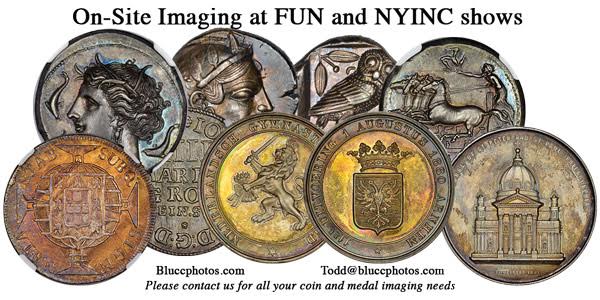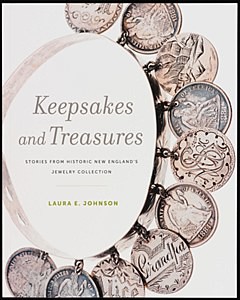
PREV ARTICLE
NEXT ARTICLE
FULL ISSUE
PREV FULL ISSUE
NEW BOOK: KEEPSAKES AND TREASURESAn article by Steve Roach in yesterday's Coin World alerted me to a recently published book on jewelry that includes a good bit on coin jewelry: Keepsakes and
Treasures: Stories from Historic New England's Jewelry Collection. -Editor
Historic New England’s jewelry collection spans centuries of family tales, industrial development, and artistic expression. Some of these adornments bear designer names. Some are well used, with stories embedded in every nick and missing stone. Some represent up-to-the-minute trends and some embody deeply held spiritual beliefs. With full-color photographs, the sixty-four-page Keepsakes and Treasures reveals the stories behind jewelry made and worn in New England from the mid-1700s to the present Founded in 1910 by William Sumner Appleton, Historic New England is "the oldest, largest, and most comprehensive regional heritage organization in the nation." Its collection included over 110,000 objects an a million archival materials. Here's an excerpt from Steve's article. -Editor The book is organized by looking at similar groups of jewelry, such as cameos, memorial pieces, and love tokens. Featured prominently is a silver bracelet that belonged to Lydia Chase of Provincetown, R.I., and was likely a gift from her mother, Ella. The object documents three generations of the family. As the book explains, “Silver coins were an affordable material. Jewelers could file down the faces to create a perfect surface on which to engrave names of loved ones.” Johnston summarizes, “This is far more than a love token, even though collectors often give these coin jewels that name. This bracelet was a family heirloom, a wearable family tree.” Six of the 10 Seated Liberty dimes that serve as host coins are dated 1884; the others are engraved on the obverse, leaving only the reverse, which lacks a date. The engravings range from names, to initials, to a butterfly. In the book’s memorial section is a Washington silver medal. The author writes, “The death of George Washington in 1799 sent the young Republic into deep mourning. The outpouring of grief translated into a wide range of commemorative objects and elaborate funeral processions across the country.” The medal was designed by Jacob E. Perkins, a silversmith in Newburyport, Mass., and struck in 1800. It was popular for children to wear the medal at Washington’s memorial processions after the his death in December 1799. For more information, or to order, see:  Wayne Homren, Editor The Numismatic Bibliomania Society is a non-profit organization promoting numismatic literature. See our web site at coinbooks.org. To submit items for publication in The E-Sylum, write to the Editor at this address: whomren@gmail.com To subscribe go to: https://my.binhost.com/lists/listinfo/esylum All Rights Reserved. NBS Home Page Contact the NBS webmaster 
|
